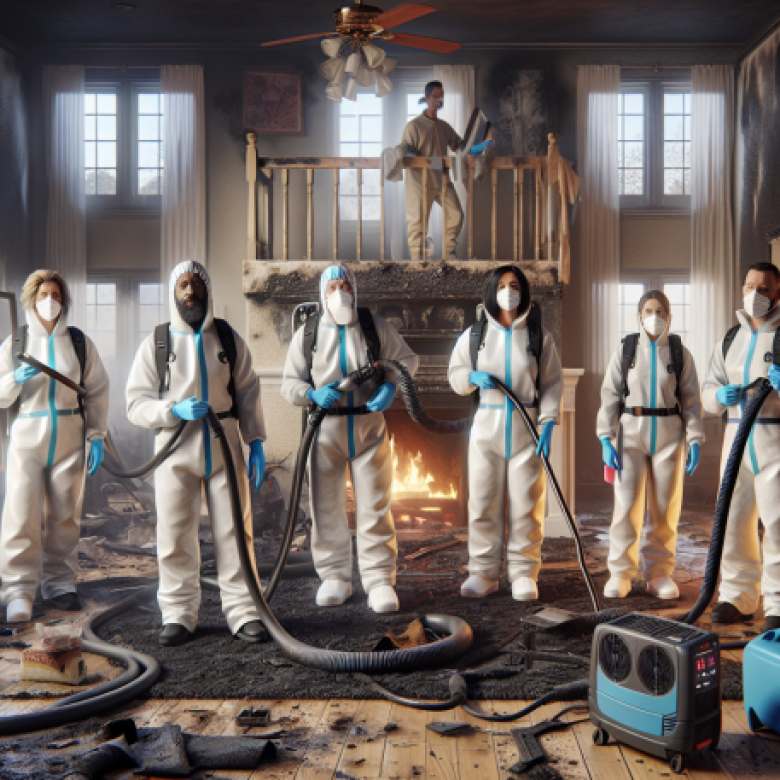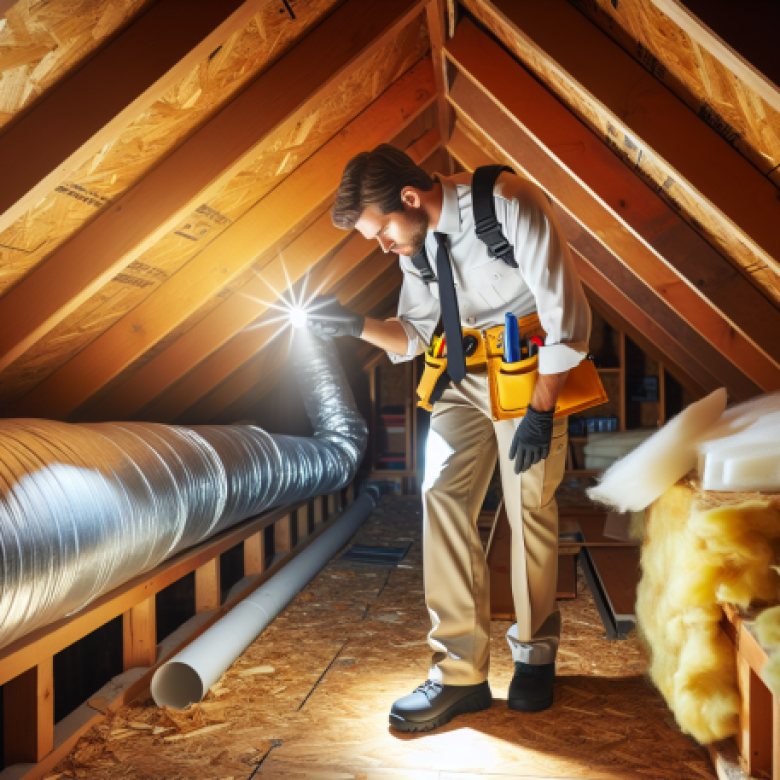When disaster strikes, whether it’s water damage, fire devastation, or mold infestation, knowing how to prepare your property for restoration is crucial. At Projekt Restoration, we understand the urgency and complexity of these situations. As your go-to experts in water, fire, and mold restoration, we also specialize in mold assessment, biohazard cleanup, and comprehensive reconstruction services. Preparing your property for restoration not only ensures a smoother recovery process but also helps in minimizing further damage. In this guide, we’ll walk you through essential steps to get your property ready for professional restoration, ensuring safety and efficiency every step of the way. Whether you’re dealing with water damage, fire aftermath, or mold issues, our expert tips will help you navigate the restoration process with confidence.
Assessing the Damage: First Steps to Take
When disaster strikes, whether it’s a flood, fire, or mold infestation, the first crucial step in preparing your property for restoration is to assess the damage. This initial assessment sets the foundation for a successful restoration process, ensuring that all affected areas are identified and addressed promptly. Here’s a comprehensive guide on the first steps to take when assessing the damage to your property.
First and foremost, ensure your safety and that of your family or occupants. Before entering the damaged property, make sure it is structurally sound. If there is any doubt about the safety of the building, consult with a professional before proceeding. Once it’s safe to enter, document everything. Take extensive photographs and videos of all affected areas. This documentation is vital for insurance claims and will help restoration professionals understand the extent of the damage.
Next, contact your insurance company immediately. Inform them of the situation and provide them with the documentation you’ve gathered. They will guide you through the claims process and may send an adjuster to assess the damage in person. It’s essential to keep a detailed record of all communications with your insurance company, including dates, times, and the names of representatives you speak with.
After notifying your insurance company, it’s time to begin the initial cleanup. Remove any standing water if it’s safe to do so, and start drying out the property to prevent further damage and mold growth. Use fans, dehumidifiers, and open windows to promote air circulation. Be cautious of electrical hazards when dealing with water damage. For more severe cases, such as extensive water damage in Cooper City, consider professional water damage restoration services.
It’s also crucial to identify and address any biohazards. Floodwaters, for example, can contain harmful contaminants, and fire damage can leave behind hazardous materials. Professional biohazard cleanup services are recommended to ensure your property is safe for occupancy.
Once the immediate hazards are under control, conduct a thorough inspection of your property. Look for signs of structural damage, such as cracks in walls or foundations, warped floors, and compromised roofing. Pay special attention to hidden areas where damage might not be immediately visible, such as behind walls and under flooring. Utilizing advanced tools like infrared thermal imaging can help detect hidden moisture and structural issues.
For properties affected by mold, a professional mold assessment is essential. Mold can pose serious health risks and can spread rapidly if not addressed promptly. Professional mold removal services, such as those offered in Hollywood and Miramar, can ensure that all mold is effectively eradicated and that your property is safe for occupancy.
In summary, the first steps in assessing the damage to your property involve ensuring safety, documenting the damage, contacting your insurance company, beginning initial cleanup, addressing biohazards, and conducting a thorough inspection. By following these steps, you can lay the groundwork for a successful restoration process and ensure that your property is restored to its pre-damage condition as efficiently as possible.
For more detailed guidance and professional assistance, consider reaching out to restoration experts. You can contact us at Projekt Restoration for comprehensive support in restoring your property. Additionally, our restoration cost calculator can help you estimate the expenses involved in the restoration process.
Creating a Restoration Plan: Setting Priorities
When preparing your property for restoration, creating a comprehensive restoration plan is crucial to ensure a smooth and efficient process. Setting priorities within this plan is essential to address the most critical issues first and prevent further damage. Start by conducting a thorough assessment of the property to identify the areas that require immediate attention. This assessment should include evaluating structural damage, water intrusion, mold growth, and any other hazards that could pose a risk to the property and its occupants. Utilizing professional services like mold assessment can provide a detailed understanding of the extent of the damage and help in prioritizing tasks.
Once the assessment is complete, categorize the issues based on their severity and urgency. For instance, water damage should be addressed promptly to prevent mold growth and structural deterioration. Engaging in water damage restoration services can mitigate further damage and expedite the recovery process. Similarly, if there is fire damage, it is imperative to prioritize fire damage restoration to ensure the safety and stability of the property.
Next, develop a timeline for the restoration activities, starting with the most critical tasks. Allocate resources, including manpower and materials, to each task based on its priority. It is also beneficial to consult with restoration experts who can provide insights and recommendations tailored to your specific situation. Services such as consulting can offer valuable guidance in creating an effective restoration plan.
In addition to addressing immediate concerns, consider long-term preventive measures to protect the property from future damage. This may include installing dehumidifiers, improving drainage systems, and reinforcing structural elements. Regular maintenance and inspections can also help in early detection and mitigation of potential issues.
By setting clear priorities and following a structured restoration plan, you can ensure a more efficient and successful recovery process for your property.
Hiring Professional Help: What to Look For
When preparing your property for restoration, hiring professional help is a crucial step to ensure the job is done efficiently and effectively. The right professionals can make a significant difference in the quality and speed of the restoration process. Here are some key factors to consider when selecting a restoration service provider.
First and foremost, look for a company with a solid reputation and extensive experience in the field. A well-established company is more likely to have the necessary expertise and resources to handle various types of restoration projects. Check online reviews and testimonials to gauge customer satisfaction and the quality of their work. Additionally, ask for references from past clients to get a firsthand account of their experiences.
Certifications and licenses are another critical aspect to consider. Ensure that the company you choose is certified by relevant industry bodies and holds all necessary licenses to operate in your area. This not only guarantees that they adhere to industry standards but also provides peace of mind knowing that they are qualified to handle the job. For instance, if you need mold removal services, look for certifications from organizations like the Institute of Inspection, Cleaning and Restoration Certification (IICRC).
Insurance coverage is also essential when hiring a restoration company. Verify that the company has both liability insurance and workers’ compensation insurance. This protects you from any potential liabilities in case of accidents or damages during the restoration process. Without proper insurance, you could be held financially responsible for any mishaps that occur on your property.
Another important factor is the range of services offered by the restoration company. A comprehensive service provider can handle various aspects of the restoration process, from initial assessment to final reconstruction. This can include water damage restoration, mold removal, fire damage restoration, and biohazard clean-up. For example, if you are dealing with water damage, you might want to consider a company that offers Weston water damage services. Similarly, if mold is a concern, look for a provider that specializes in Cooper City mold removal.
The use of advanced technology and equipment is another indicator of a professional restoration company. Modern tools and techniques can significantly enhance the efficiency and effectiveness of the restoration process. For instance, infrared thermal imaging can help detect hidden moisture and prevent further damage. Inquire about the equipment and methods the company uses to ensure they are up-to-date with the latest industry standards.
Communication and customer service are also vital components of a successful restoration project. Choose a company that is responsive and transparent in their communication. They should provide clear explanations of the work to be done, timelines, and cost estimates. A reliable company will also keep you informed throughout the process and address any concerns or questions you may have.
Lastly, consider the cost of the services. While it is important to find a company that fits within your budget, do not compromise on quality for the sake of saving money. Request detailed quotes from multiple providers and compare their offerings. Be wary of unusually low prices, as they may indicate subpar services or hidden costs. Utilize tools like a calculator to estimate potential expenses and ensure you are getting a fair deal.
In conclusion, hiring professional help for property restoration involves careful consideration of various factors, including reputation, certifications, insurance, range of services, technology, communication, and cost. By taking the time to evaluate these aspects, you can select a reliable and competent restoration company that will restore your property to its original condition efficiently and effectively.
Gathering Necessary Permits and Documentation
When preparing your property for restoration, one of the most crucial steps is gathering the necessary permits and documentation. This process ensures that your restoration project complies with local regulations and codes, thereby avoiding potential legal issues and delays. The first step in this process is to identify the specific permits required for your project. These can vary depending on the nature and extent of the restoration work, as well as the location of your property. Common permits may include building permits, electrical permits, plumbing permits, and environmental permits, among others.
To begin, contact your local building department or municipal office to inquire about the permits needed for your restoration project. They can provide you with a comprehensive list of requirements and guide you through the application process. It’s also advisable to consult with a professional contractor or restoration specialist who is familiar with local regulations. They can offer valuable insights and help streamline the permit acquisition process.
Once you have identified the necessary permits, the next step is to gather all required documentation. This typically includes detailed project plans, architectural drawings, and engineering reports. These documents should outline the scope of the work, materials to be used, and any structural changes to be made. Accurate and thorough documentation is essential, as it demonstrates your commitment to adhering to safety standards and building codes.
In addition to project plans, you may need to provide proof of property ownership, contractor licenses, and insurance certificates. These documents help verify that you have the legal right to undertake the restoration work and that you are working with qualified professionals. If your project involves specialized work, such as biohazard clean-up or fire damage restoration, additional permits and certifications may be required.
It’s important to note that obtaining permits can sometimes be a time-consuming process. Therefore, it’s advisable to start this process as early as possible to avoid delays in your restoration timeline. Keep in mind that some permits may require inspections at various stages of the project. Scheduling these inspections in advance can help ensure that your project stays on track.
Another critical aspect of gathering permits and documentation is staying informed about any changes in local regulations. Building codes and permit requirements can change over time, so it’s essential to stay updated. Regularly check with your local building department or consult with your contractor to ensure that your project remains compliant with current regulations.
In some cases, you may need to obtain permits from multiple agencies or departments. For example, if your restoration project involves significant environmental impact, you may need to secure permits from environmental protection agencies in addition to local building permits. Coordination between different agencies can be complex, so it’s beneficial to have a clear understanding of each agency’s requirements and timelines.
Finally, keep all permits and documentation organized and easily accessible. This not only helps during the restoration process but also serves as a valuable record for future reference. Proper documentation can be crucial if you decide to sell your property or if any issues arise after the restoration is complete.
In conclusion, gathering the necessary permits and documentation is a fundamental step in preparing your property for restoration. By understanding the specific requirements, consulting with professionals, and staying organized, you can ensure a smooth and compliant restoration process. For more detailed guidance on specific restoration services, such as mold removal or water damage restoration, consider reaching out to experts who can provide tailored advice and support.
Cleaning and Debris Removal: Getting Started
Cleaning and debris removal is a crucial first step in preparing your property for restoration. This process involves more than just sweeping up dirt and dust; it requires a thorough approach to ensure that all unwanted materials are effectively removed, making way for the restoration work to begin. Start by assessing the extent of the debris and categorizing it into different types, such as organic waste, construction debris, and hazardous materials. This will help you determine the appropriate disposal methods and whether professional assistance is needed. For instance, if you encounter mold, it is essential to engage experts in Cooper City mold removal to handle the situation safely and effectively.
Once you have a clear understanding of the debris types, gather the necessary tools and equipment. Basic cleaning supplies like brooms, dustpans, and garbage bags are essential, but you may also need heavy-duty items such as wheelbarrows, shovels, and industrial vacuums. Personal protective equipment (PPE) like gloves, masks, and safety goggles are crucial to protect yourself from potential hazards. If the debris includes biohazardous materials, it is advisable to consult professionals who specialize in biohazard clean-up to ensure safe and compliant removal.
Begin the cleaning process by removing large debris first. This includes broken furniture, fallen branches, and any other sizable items that can be easily picked up and discarded. Next, focus on smaller debris and dirt. Use a broom and dustpan to sweep up loose dirt and dust, and an industrial vacuum to remove finer particles. Pay special attention to corners and hard-to-reach areas where debris tends to accumulate.
For properties affected by water damage, it is essential to address moisture issues promptly to prevent mold growth. Utilize dehumidifiers and fans to dry out the area thoroughly. If mold is already present, it is crucial to seek professional help for Davie mold removal to ensure that the mold is eradicated and does not pose a health risk.
Proper disposal of debris is another critical aspect of the cleaning process. Separate recyclable materials from non-recyclable ones and dispose of them according to local regulations. Hazardous materials, such as chemicals and asbestos, require special handling and should be disposed of by professionals to avoid environmental contamination and health risks.
Throughout the cleaning and debris removal process, maintain clear communication with your restoration team. This ensures that everyone is aware of the progress and any potential issues that may arise. Regular updates and consultations can help streamline the process and address any concerns promptly.
In summary, cleaning and debris removal is a foundational step in preparing your property for restoration. By systematically assessing the debris, using the right tools and equipment, and ensuring proper disposal, you can create a clean and safe environment for the restoration work to commence. Whether dealing with mold, biohazardous materials, or general debris, professional assistance can provide the expertise and resources needed to handle the situation effectively.
Repairing Structural Damage: Key Considerations
When it comes to preparing your property for restoration, addressing structural damage is a critical step that requires careful planning and execution. Structural damage can compromise the safety and integrity of your home or commercial building, making it essential to approach repairs with a thorough understanding of the key considerations involved. The first step in repairing structural damage is to conduct a comprehensive assessment of the affected areas. This often involves hiring a professional to evaluate the extent of the damage and identify any underlying issues that may not be immediately visible. Utilizing advanced techniques such as infrared thermal imaging can help detect hidden problems, such as moisture intrusion or compromised structural elements, ensuring that all issues are addressed during the restoration process.
Once the assessment is complete, it is crucial to develop a detailed repair plan. This plan should outline the specific repairs needed, the materials required, and the estimated timeline for completion. It is important to select high-quality materials that match the original construction to maintain the structural integrity and aesthetic appeal of the property. In some cases, it may be necessary to consult with structural engineers or architects to ensure that the repair plan meets all building codes and regulations.
Safety is a paramount concern when repairing structural damage. Before beginning any repair work, it is essential to secure the area to prevent accidents and injuries. This may involve installing temporary supports or shoring to stabilize the structure while repairs are being made. Additionally, all workers should be equipped with appropriate safety gear and trained in safe work practices to minimize the risk of injury.
Another key consideration is the potential for mold growth and other secondary issues that can arise from structural damage. Moisture intrusion, for example, can lead to mold growth, which can further compromise the structural integrity of the building and pose health risks to occupants. It is important to address any moisture issues promptly and thoroughly, utilizing services such as dehumidification and mold removal to ensure a safe and healthy environment.
Effective communication with all stakeholders is also essential throughout the repair process. This includes keeping property owners informed of the progress and any changes to the repair plan, as well as coordinating with insurance companies to ensure that all necessary documentation is provided for claims. Clear and consistent communication helps to manage expectations and avoid misunderstandings, ensuring a smoother restoration process.
Finally, it is important to consider the long-term maintenance and monitoring of the repaired structure. Regular inspections and maintenance can help identify potential issues before they become major problems, extending the lifespan of the repairs and protecting the investment in the property. In some cases, it may be beneficial to implement preventative measures, such as improved drainage systems or reinforced structural elements, to reduce the risk of future damage.
In conclusion, repairing structural damage is a complex and multifaceted process that requires careful planning, expert knowledge, and a commitment to safety and quality. By conducting a thorough assessment, developing a detailed repair plan, prioritizing safety, addressing secondary issues, maintaining effective communication, and planning for long-term maintenance, property owners can ensure that their restoration efforts are successful and their properties are restored to their original condition. For more information on preparing your property for restoration, visit our contact page or use our calculator to estimate the cost of repairs.
Final Touches: Ensuring Long-Term Protection
As you approach the final stages of preparing your property for restoration, it is crucial to focus on the finishing touches that ensure long-term protection. These steps are vital for safeguarding your investment and maintaining the integrity of your property. One of the primary considerations is to conduct a thorough inspection to identify any remaining vulnerabilities. This includes checking for any signs of water damage, mold, or structural weaknesses that may have been overlooked during the initial restoration process. Utilizing advanced techniques such as infrared thermal imaging can help detect hidden moisture and prevent future issues.
Next, consider implementing preventive measures to protect against future damage. For instance, installing a comprehensive dehumidification system can help control moisture levels and prevent mold growth. Regular maintenance of your HVAC system is also essential to ensure proper ventilation and air quality. Additionally, applying protective coatings to surfaces can provide an extra layer of defense against wear and tear, especially in high-traffic areas.
Another critical aspect is to ensure that all repairs and restorations are up to code and meet local regulations. This not only guarantees the safety and durability of your property but also helps avoid potential legal issues. Consulting with professionals who specialize in restoration consulting can provide valuable insights and ensure that all aspects of the project are compliant with industry standards.
Moreover, it is important to address any biohazard concerns that may arise during the restoration process. Engaging in professional biohazard clean-up services ensures that your property is free from harmful contaminants and safe for occupancy. This step is particularly crucial if your property has been exposed to hazardous materials or if there has been a significant water or fire damage incident.
In addition to these measures, consider investing in quality materials and finishes that offer long-term durability. This includes selecting water-resistant flooring, mold-resistant drywall, and high-quality paint that can withstand environmental stressors. These choices not only enhance the aesthetic appeal of your property but also contribute to its longevity and resilience.
Finally, establishing a regular maintenance schedule is key to preserving the condition of your property. Routine inspections, timely repairs, and proactive measures can help identify and address potential issues before they escalate. This approach not only extends the lifespan of your property but also ensures a safe and comfortable living environment for its occupants.
In conclusion, the final touches in preparing your property for restoration are essential for ensuring long-term protection. By conducting thorough inspections, implementing preventive measures, adhering to regulations, addressing biohazard concerns, investing in quality materials, and maintaining a regular upkeep schedule, you can safeguard your property and enjoy peace of mind. For more information on how to protect your property and professional assistance, feel free to contact us.
Conclusion: Ensuring a Smooth Restoration Journey
Preparing your property for restoration is a crucial step in safeguarding your investment and ensuring a smooth, efficient process. By conducting a thorough assessment, securing necessary permits, and choosing the right professionals, you lay a strong foundation for a successful restoration project. Remember to prioritize safety, maintain clear communication with your restoration team, and stay proactive in addressing any issues that arise. With careful planning and attention to detail, you can transform your property back to its former glory, or even better, while minimizing stress and unexpected setbacks. Embrace the journey with confidence, knowing that your efforts today will lead to a beautifully restored property tomorrow.





